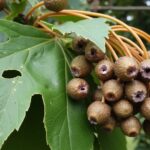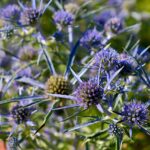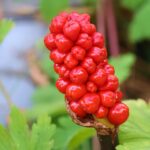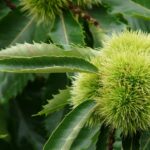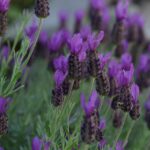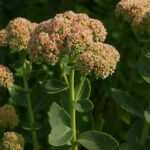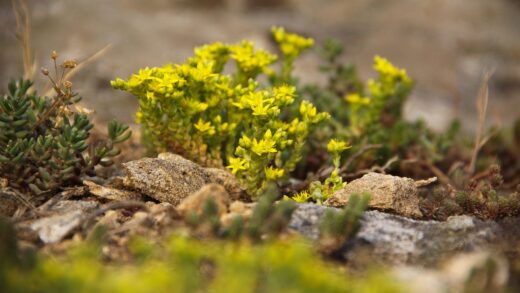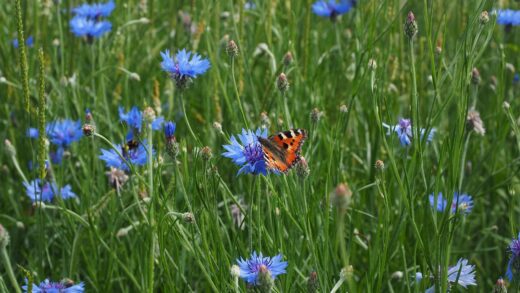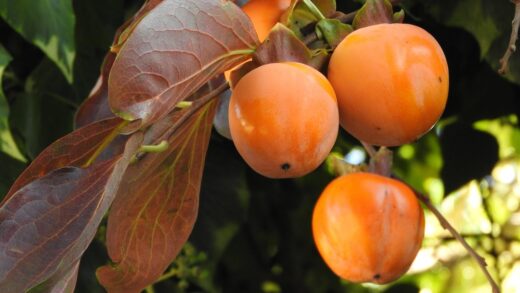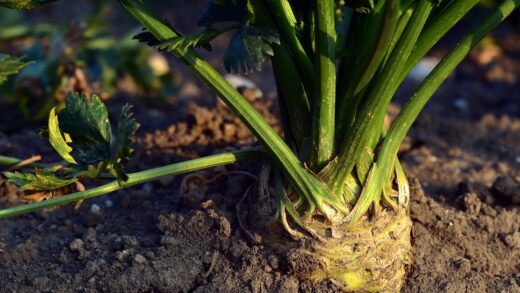While the wood anemone is generally a resilient and trouble-free plant when grown in conditions that mimic its natural woodland habitat, it is not entirely immune to the attentions of certain pests and diseases. A vigilant gardener who understands the potential threats can often prevent problems before they take hold. Most issues that arise are directly linked to suboptimal growing conditions, such as poor air circulation, waterlogged soil, or a lack of vigor in the plant. By focusing on preventative care and creating a healthy environment, you can ensure your patch of wood anemones remains a vibrant and enchanting feature of your spring garden. Recognizing the early signs of trouble is key to effective and timely intervention, preserving both the beauty and the health of the colony.
The most common adversaries of the wood anemone in the garden are slugs and snails. These mollusks thrive in the same cool, damp, and shaded conditions that the anemones love, and they have a particular appetite for the tender new leaves and delicate flower petals that emerge in early spring. An overnight attack can leave the foliage riddled with holes and the blossoms shredded, spoiling the aesthetic appeal of the display. Their presence is often given away by the silvery slime trails they leave behind. Managing these pests is a perennial challenge in many shade gardens, but there are numerous effective strategies to mitigate their damage.
Fungal diseases can also occasionally affect wood anemones, with powdery mildew being one of the more common culprits. This disease appears as a white, dusty coating on the surface of the leaves, and it tends to occur in conditions of high humidity combined with poor air circulation. While it rarely kills the plant, a severe infection can weaken it by interfering with photosynthesis, which in turn affects the amount of energy stored in the rhizome for the following year. Ensuring adequate spacing between plants and selectively pruning nearby vegetation to improve airflow are important preventative measures.
A more serious, though thankfully less common, fungal issue is anemone smut. This is a specific disease that can cause significant distortion of the plant’s leaves and stems, eventually releasing black, sooty spores that can infect neighboring plants. There is no chemical cure for this disease, so management relies on strict sanitation. Any infected plants must be carefully removed and destroyed to prevent its spread. By and large, however, a healthy, well-sited wood anemone has a strong natural resistance to most problems, and proactive, observant gardening is the best line of defense.
Common invertebrate pests
The most frequent and frustrating pests to trouble the wood anemone are undoubtedly slugs and snails. These gastropods are most active in the cool, damp weather of spring, precisely when the anemones are at their peak. They are nocturnal feeders, and the damage they inflict – irregular holes in the leaves and chewed-off flower petals – often appears as if from nowhere overnight. A severe infestation can decimate a young or small planting, as they can consume the emerging shoots before they even have a chance to properly develop. Careful monitoring, especially during wet periods, is essential.
More articles on this topic
There are several effective methods for controlling slug and snail populations. Creating a less hospitable environment by removing potential hiding places like piles of damp leaves or old pots can help reduce their numbers. Physical barriers can also be effective; a ring of crushed eggshells, horticultural grit, or copper tape placed around the anemone patch can deter them. Traps, such as shallow dishes of beer sunk into the ground, can be very effective at luring them to their demise. For those who prefer biological controls, encouraging natural predators like thrushes, hedgehogs, and ground beetles by creating a wildlife-friendly garden is a superb long-term strategy.
Aphids are another potential pest, although they are generally less of a problem for wood anemones than they are for many other garden plants. These small, sap-sucking insects may occasionally colonize the undersides of the leaves or the flower stems, particularly if the plant is under stress or if its growth is unnaturally soft due to over-fertilization with nitrogen. A small infestation can often be dealt with by simply wiping them off with a finger and thumb or by spraying them with a strong jet of water from a hose. In more persistent cases, an application of insecticidal soap can be effective, ensuring you achieve good coverage on the undersides of the leaves.
Another soil-dwelling pest that can cause issues is the vine weevil, specifically its larval grub stage. The adult weevils may cause some minor notching on the leaf margins, but the real damage is done by the C-shaped, creamy-white grubs that live in the soil and feed on roots and rhizomes. An infestation can lead to a sudden wilting and collapse of the plant. Control is best achieved by applying pathogenic nematodes to the soil in the autumn or spring. These microscopic organisms actively seek out and parasitize the vine weevil grubs, providing an effective and environmentally safe solution.
Fungal and bacterial diseases
Among the diseases that can affect the wood anemone, fungal issues are the most prevalent. Powdery mildew is a common foliar disease that can be identified by the characteristic white, powdery patches that form on the leaves. It thrives in humid conditions and in areas where plants are overcrowded, leading to stagnant air. While it looks unsightly, it is often a superficial problem that does not cause severe harm to the plant’s long-term health unless the infection is particularly severe and persistent. The best defense is prevention: ensure good spacing when planting and promote air circulation by managing surrounding vegetation.
More articles on this topic
A more concerning fungal disease is anemone smut, caused by the fungus Urocystis anemones. This is a systemic disease that infects the entire plant. The symptoms are quite distinctive: the leaves and stems become thickened, distorted, and may exhibit lead-grey coloured streaks or blisters. These blisters eventually rupture to release a mass of black, powdery spores, which can then spread to infect other nearby anemone plants. Unfortunately, there is no chemical treatment available to cure an infected plant.
If you identify a plant with anemone smut, immediate and decisive action is required to prevent it from spreading throughout your collection. The infected plant must be carefully dug up and removed in its entirety, including the rhizome and the immediately surrounding soil. Do not place this material in your compost bin, as the spores can survive the composting process. The best course of action is to either burn the infected plant material or seal it in a plastic bag and dispose of it with your household waste. Thoroughly cleaning your tools after dealing with an infected plant is also a crucial sanitation measure.
Root and rhizome rot can also be a significant problem, and it is almost always caused by poor growing conditions, specifically waterlogged soil. When the rhizomes are sitting in soil that is saturated with water for extended periods, especially during their summer dormancy, they are highly susceptible to attack from various soil-borne fungi and bacteria. The symptoms above ground are a general lack of vigor, yellowing leaves, and the eventual collapse of the plant. Prevention is the only cure; ensure the planting site has excellent drainage and avoid overwatering during the summer months.
Prevention as the best defense
The most effective strategy for managing pests and diseases in wood anemones is to focus on proactive prevention rather than reactive treatment. A healthy, vigorous plant growing in its ideal environment is far less likely to succumb to problems than a plant that is stressed by poor conditions. The foundation of this preventative approach is proper site selection and soil preparation. Planting in well-draining, humus-rich soil in a location with dappled shade creates a strong and resilient plant from the outset.
Good garden hygiene is another critical component of prevention. Regularly removing dead or decaying plant debris from around the anemone patch can help to eliminate potential hiding places for slugs and snails and reduce the overwintering sites for fungal spores. Ensuring good air circulation is also vital in preventing fungal diseases like powdery mildew. Avoid planting your wood anemones too densely, and consider thinning out the branches of overhanging shrubs or trees if the air feels stagnant in that part of the garden.
A sustainable and organic approach to fertilization will also contribute to a healthier plant. As discussed, avoiding high-nitrogen chemical fertilizers is crucial. These promote soft, sappy growth that is highly attractive to aphids and more susceptible to fungal attack. Instead, rely on the slow release of nutrients from an annual mulch of compost or leaf mould. This encourages steady, strong growth that has a much better natural resistance to pests and diseases.
Finally, regular observation is a gardener’s most powerful tool. Take the time to walk through your garden and look closely at your plants. By spotting the first signs of trouble, such as the silvery trail of a slug or the first few spots of mildew, you can take action before the problem becomes widespread. Early intervention, whether it is hand-picking a few snails or removing a single affected leaf, is often all that is needed to keep your wood anemones healthy, allowing them to perform their beautiful spring display without interruption.
Environmental stress factors
It is important to recognize that not all problems are caused by pests or pathogens. Sometimes, the symptoms of distress in a wood anemone are a result of environmental stress factors. These are issues related to the plant’s growing conditions rather than an attack by another organism. For example, if the leaves appear scorched or brown around the edges, it could be a sign of too much direct sun exposure. Wood anemones are woodlanders that require protection from the harsh afternoon sun, and planting them in a location that is too exposed can lead to this kind of damage.
Similarly, an overall lack of vigor, sparse flowering, and pale foliage can be an indication of a nutrient deficiency, often stemming from soil that is too poor or sandy and lacks sufficient organic matter. While wood anemones are not heavy feeders, they do require a baseline level of fertility that is best provided by a humus-rich soil. If your soil is very poor, the plants may struggle to find the resources they need to thrive and will be more susceptible to other problems as a result. Amending the soil with compost is the best remedy for this.
Drought stress is another major environmental factor. If the plant does not receive adequate moisture during its critical spring growth period, the leaves will wilt, the flowers may fail to open properly, and the entire plant will appear stressed. As this is also the period when the rhizome is storing energy, a lack of water at this time can have serious long-term consequences for the plant’s health and its ability to return vigorously the following year. Conversely, as has been mentioned, excessive water and poor drainage, especially in summer, create a stressful environment that leads to rot.
Understanding these environmental factors is crucial for accurate diagnosis. Before concluding that your plant has a disease, first assess its growing conditions. Is it getting the right amount of light? Is the soil appropriate? Has it been watered correctly according to its life cycle? More often than not, correcting an underlying environmental issue is the key to resolving the problem and restoring the health of your wood anemone colony. A plant in the right place is a happy and healthy plant.







